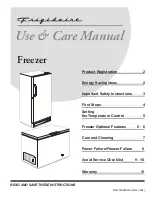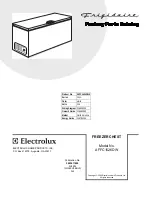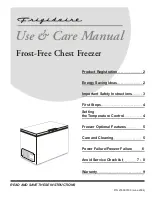
Never use cleaning agents
containing abrasive substances
such as sand, soda, acids, chlorides
or chemical solvents.
"Non-abrasive" cleaning agents are
also unsuitable as they can cause
matt areas to appear.
Make sure that water cannot get into
the temperature selector.
Never use steam-cleaning
apparatus to defrost or clean the
appliance. Steam could reach the
electrical components and cause a
short circuit.
The data plate located inside the
appliance must not be removed. It
contains information which is
required in the event of a service
call.
Before cleaning
^
Switch the appliance off, switch off at
the socket and remove the plug.
^
Take any frozen food out of the
appliance and store it in a cool place.
^
Take out any removable parts, e.g.
shelves, for cleaning.
^
Defrost the freezer.
Cleaning the interior and
accessories
Use warm water with a little washing up
liquid. Wash all accessories and
drawers by hand only. Do not wash in a
dishwasher.
^
After cleaning, wipe the interior and
accessories with a damp cloth, and
dry with a soft cloth. Leave the door
open to air the appliance for a short
while.
Ventilation gaps
^
The ventilation gaps should be
cleaned on a regular basis with a
brush or vacuum cleaner. A build-up
of dust will increase the energy
consumption of the appliance.
Door seal
Do not use any oils or grease on the
door seal as these will cause the
seal to deteriorate and become
porous over time.
The door seals should be cleaned
regularly with clean water, and then
wiped dry with a soft cloth.
After cleaning
^
Close the door and switch the
appliance on.
^
Switch on the Super freeze function
so that the freezer can cool down
quickly.
The indicator light will come on.
^
Once the temperature in the freezer
is sufficiently low, place the food
back in the freezer drawers and put
them back in the freezer.
^
You can switch the Super freeze
function off once the temperature in
the freezer has reached a constant
temperature of at least -18°C.
The indicator light will then go out.
Cleaning and care
26
















































